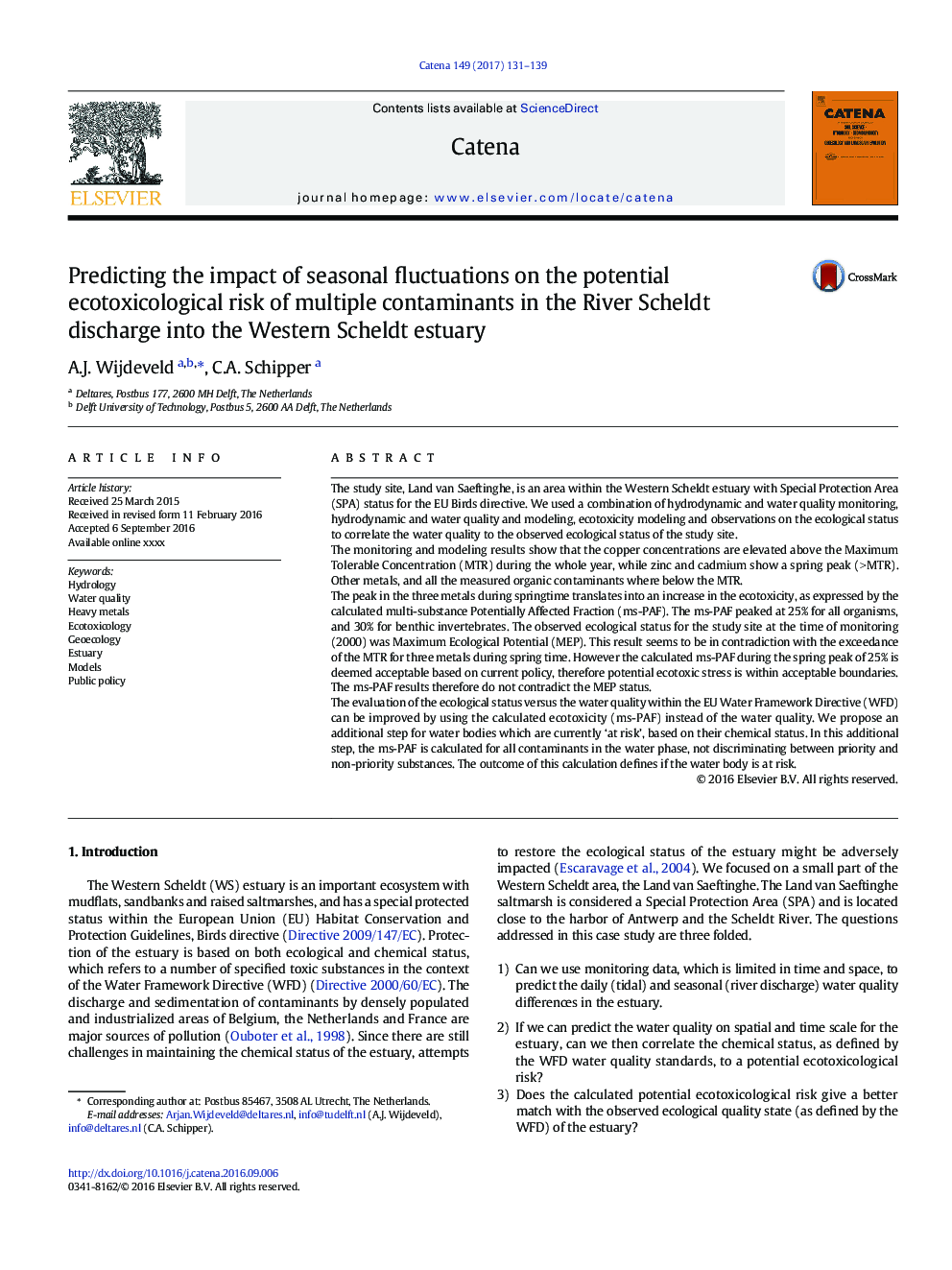| کد مقاله | کد نشریه | سال انتشار | مقاله انگلیسی | نسخه تمام متن |
|---|---|---|---|---|
| 4570854 | 1332079 | 2017 | 9 صفحه PDF | دانلود رایگان |
• Biweekly monitoring of the water quality is too infrequent to catch changes.
• Hydrodynamic/chemical models improve the insight in fluctuations in water quality.
• Ecotoxicological risk calculation improves the evaluation of the chemical status.
• There is no need to discriminating between priority and non-priority substances.
The study site, Land van Saeftinghe, is an area within the Western Scheldt estuary with Special Protection Area (SPA) status for the EU Birds directive. We used a combination of hydrodynamic and water quality monitoring, hydrodynamic and water quality and modeling, ecotoxicity modeling and observations on the ecological status to correlate the water quality to the observed ecological status of the study site.The monitoring and modeling results show that the copper concentrations are elevated above the Maximum Tolerable Concentration (MTR) during the whole year, while zinc and cadmium show a spring peak (> MTR). Other metals, and all the measured organic contaminants where below the MTR.The peak in the three metals during springtime translates into an increase in the ecotoxicity, as expressed by the calculated multi-substance Potentially Affected Fraction (ms-PAF). The ms-PAF peaked at 25% for all organisms, and 30% for benthic invertebrates. The observed ecological status for the study site at the time of monitoring (2000) was Maximum Ecological Potential (MEP). This result seems to be in contradiction with the exceedance of the MTR for three metals during spring time. However the calculated ms-PAF during the spring peak of 25% is deemed acceptable based on current policy, therefore potential ecotoxic stress is within acceptable boundaries. The ms-PAF results therefore do not contradict the MEP status.The evaluation of the ecological status versus the water quality within the EU Water Framework Directive (WFD) can be improved by using the calculated ecotoxicity (ms-PAF) instead of the water quality. We propose an additional step for water bodies which are currently ‘at risk’, based on their chemical status. In this additional step, the ms-PAF is calculated for all contaminants in the water phase, not discriminating between priority and non-priority substances. The outcome of this calculation defines if the water body is at risk.
Figure optionsDownload as PowerPoint slide
Journal: CATENA - Volume 149, Part 1, February 2017, Pages 131–139
